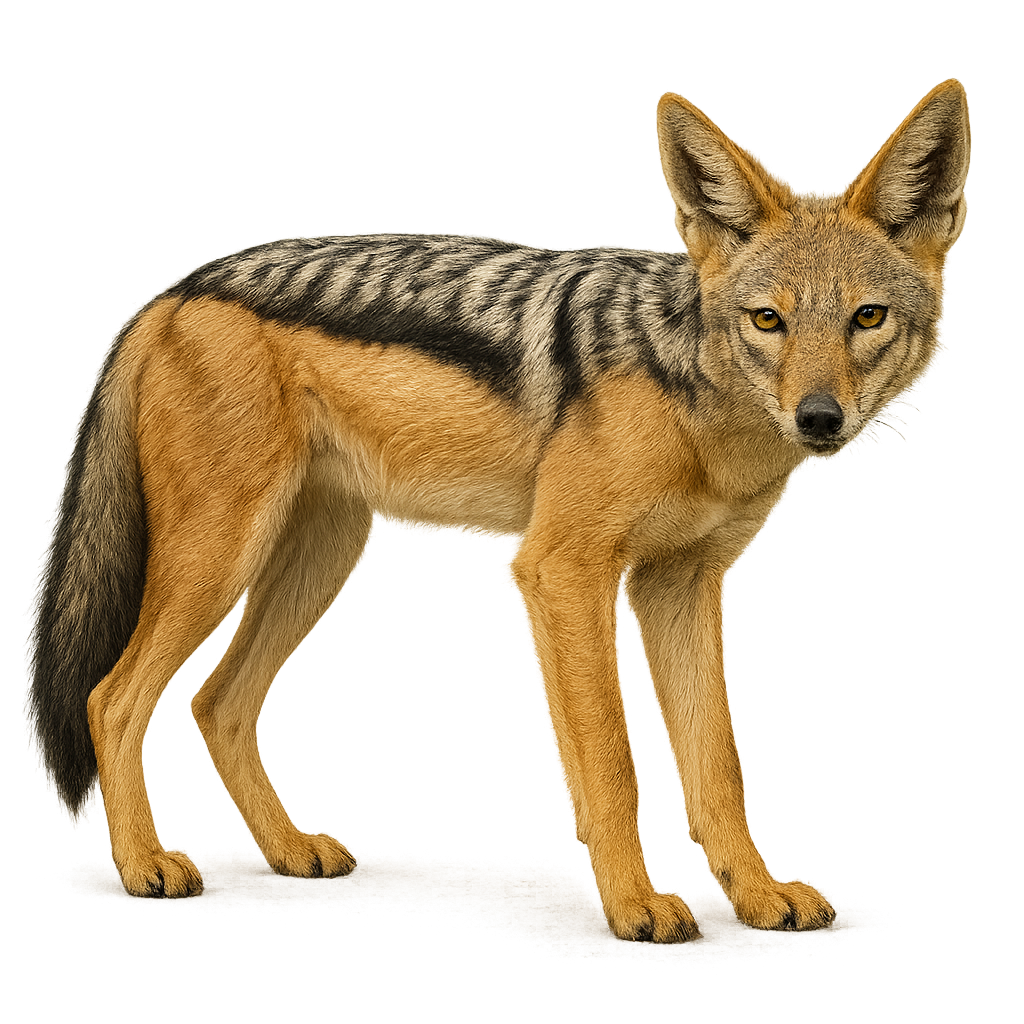Your wildlife photography guide.
Explore the black-backed jackal in detail, study its behavior, prepare your shots.
Where to observe and photograph the black-backed jackal in the wild
Learn where and when to spot the black-backed jackal in the wild, how to identify the species based on distinctive features, and what natural environments it inhabits. The WildlifePhotographer app offers tailored photography tips that reflect the black-backed jackal’s behavior, helping you capture better wildlife images. Explore the full species profile for key information including description, habitat, active periods, and approach techniques.
Black-backed jackal
Scientific name: Canis mesomelas

IUCN Status: Least Concern
Family: CANIDAE
Group: Mammals
Sensitivity to human approach: Suspicious
Minimum approach distance: 20 m
Rut period: May to July
Gestation: 60-65 jours
Births: July to September
Habitat:
Savannas, semi-desert areas, grasslands
Activity period :
Mainly active at night, generally discreet during the day.
Identification and description:
The black-backed jackal, or Canis mesomelas, is a medium-sized canid easily recognized by its distinctive coat. It features a black back contrasting with the rest of its body, which is usually tawny or grayish. This opportunistic predator is primarily nocturnal, although it can be active at dusk. It inhabits various environments, from savannas to semi-desert areas. The black-backed jackal is a social animal, often seen in pairs or small family groups. Its communication relies on a variety of vocalizations, including howls and barks. Although wary of humans, it adapts well to human-modified environments.
Recommended lens:
400 mm – adjust based on distance, desired framing (portrait or habitat), and approach conditions.
Photography tips:
To photograph the black-backed jackal, it is advisable to use a telephoto lens of at least 400mm to capture detailed images from a distance. The best opportunities often arise at dusk or dawn when the animal is most active. Look for open areas in savannas or grasslands where they often hunt. Be patient and discreet to avoid scaring them away. Use a tripod to stabilize your camera, especially in low-light conditions.
The WildlifePhotographer App is coming soon!
Be the first to explore the best nature spots, track rutting seasons, log your observations, and observe more wildlife.
Already 1 449 wildlife lovers subscribed worldwide

